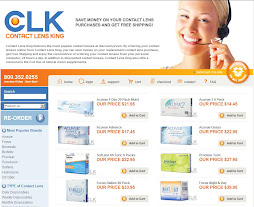Contact lenses have proven to be a great boon to those who need vision correction but still want to maintain the natural freedom of not wearing glasses. However, there is a tendency to forget that the continued enjoyment of this convenience comes with a price—the need to follow required practices, instructions, and habits to ensure the healthy use of these lenses.
Some estimates* put the incidents of wearers not complying with eye doctors’ and manufacturers’ recommended contact lens care and replacement regimens at just fewer than 40%. That is a significant number even though it is less than half the lens wearing population, because any rate of having to deal with unnecessary infections, eye and/or vision damage due to neglect is unacceptable.
Non-compliance occurs mainly because some patients disregard care instructions once they have their contacts (20 % of those surveyed in the CCLR study* were even unsure of what kind of lens they were wearing), so they end up inadvertently or deliberately going against the advice of their doctor. We are all acquainted with people who would rather listen to an all-knowing relative or friend instead of to conventional (and professional) wisdom. This is taking a great chance in regard to eye health.
Practices that get contact lens users in trouble include not exercising proper hygiene when handling contacts, extending the wear times of lenses beyond their recommended use, sleeping in contacts not designed for that purpose, not using a ‘rub and rinse’ step in the lens cleaning process, topping off rather than discarding used solution, and not changing contact lens cases often enough. Such risky habits increase the possibilities of developing infections and corneal complications that can threaten sight. One such infection is keratitis, characterized by unusual redness, blurry vision, pain in the eye, light sensitivity and excessive tearing or discharge. A more serious form, Akanthamoeba keratitis, can lead to vision loss requiring corneal transplants.
Fortunately, reversing the non-compliance trend is a relatively simple ‘fix’. It just takes the willingness to become familiar with the type (modality) of lenses you are wearing and apply the needed care and replacement habits for that lens. It is also important to keep regular appointments with your eye doctor, not only to monitor eye health and any changes in vision but also to learn about improvements in contact lenses that could place you in a more convenient or comfortable lens. They are also the person to go to when you need answers to questions about contacts. For their part, many doctors have stepped up their efforts to be more effective instructors in regards to patients and their contact lenses.
Ultimately, the responsibility for contact lens compliance rests on the wearer. Perfection may not occur all the time, but it is always a good goal to shoot for--and well worth the up front effort to reap the healthy benefits that last a lifetime.
*Centre for Contact Lens Research at University of Waterloo, Ontario, Canada, including the participation of 158 US eye doctors.
Tuesday, July 5, 2011
Contact Lens Compliance, Necessary for Eye Health
Subscribe to:
Post Comments (Atom)





No comments:
Post a Comment